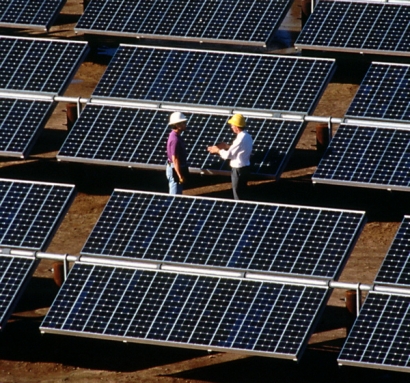
Residential- and commercial-scale solar costs have also come down steadily, lowering to 16 and 11 cents per kWh respectively, and work continues to reach the 2020 cost targets of 10 and 8 cents. According to the National Renewable Energy Laboratory report, low module prices have been the largest driver of cost reductions, while the more stubborn “soft” costs—like labor, permitting, interconnection, customer acquisition, financing, and grid integration—remain challenges.
Now, the Department of Energy (DOE) is looking beyond SunShot’s 2020 goals with an expanded 2030 vision for the Solar Energy Technologies Office. Specifically, while DOE will continue research to drive down costs, new funding programs will focus on a broader scope, which includes early-stage research to address solar energy’s critical challenges of grid reliability, resilience, and storage.
“With the impressive decline in solar prices, it is time to address additional emerging challenges,” said Daniel Simmons, Acting Assistant Secretary for Energy Efficiency and Renewable Energy. “As we look to the future, DOE will focus new solar R&D on the Secretary’s priorities, which include strengthening the reliability and resilience of the electric grid while integrating solar energy.”
To further the new priorities for DOE’s Solar Energy Technologies Office, Acting Assistant Secretary Simmons today announced up to $82 million in early-stage research in two areas:
Awardees will be required to contribute 20% of the funds to their overall project budget, yielding total public and private spending of nearly $100 million. The funds provided are not grants, but cooperative agreements, which involve substantial federal oversight and consist of go/no-go technical milestones that ensure attentive stewardship of projects.
Since 2007, the amount of solar power installed in the U.S. has increased from 1.1 GW to an estimated 47.1 GW in 2017—enough to power the equivalent of 9.1 million average American homes.
For information: Department of Energy

